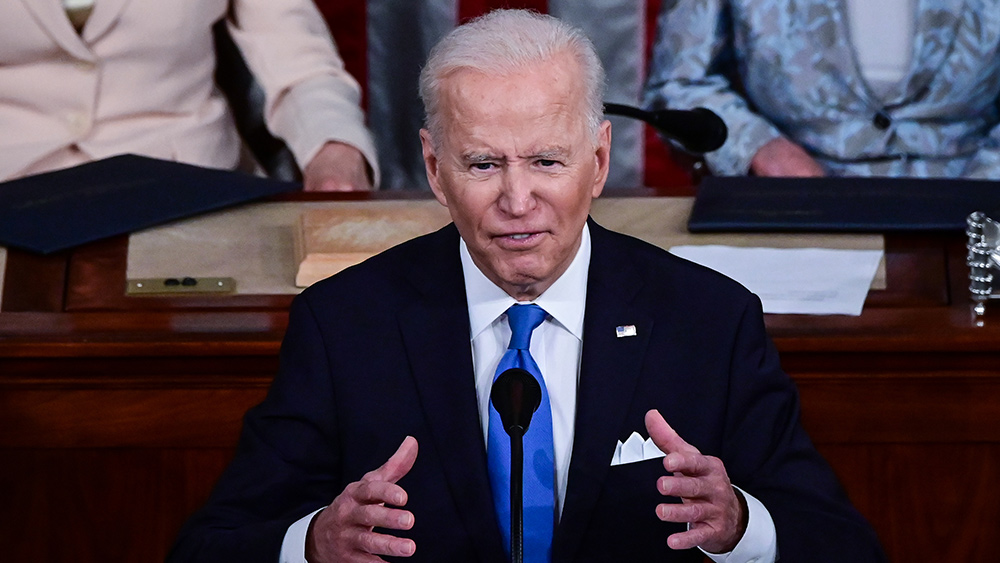Report: China is a bigger air pollution contributor than all developed nations combined
05/21/2021 / By Virgilio Marin

A report shows that China emitted more greenhouse gases in 2019 than all developed nations combined. Led by the American research firm Rhodium Group, the report notes that the Communist nation’s greenhouse gas emissions are more than 30 million metric tons higher than the combined total of all developed nations, including the United States.
Researchers arrived at this finding after measuring the amounts of carbon dioxide, methane, nitrous oxide, hydrofluorocarbons, perfluorocarbons and sulfur hexafluoride that were emitted by 190 nations.
Global emissions rose by 11.4 percent in the last decade to reach 52 gigatons (52 billion metric tons) in 2019. China emitted more than 14 gigatons to contribute 27 percent to this global total. That was triple the country’s emissions from the 1990s.
The second-biggest emitter was the U.S., which accounted for 11 percent of the total, or less than six gigatons. India edged out the European Union for the first time to come in third at 6.6 percent, or over 3.5 gigatons.
“China’s emissions not only eclipsed that of the US – the world’s second-largest emitter, at one percent of the global total – but also, for the first time, surpassed the emissions of all developed countries combined,” Rhodium Group wrote on its website.
For the study, the researchers defined “developed nations” as those that belonged to either the EU or the Organization for Economic Co-operation and Development (OECD). Emissions from all members of the OECD and the EU reached 14,057 million metric tons – 36 million metric tons short of China’s 14,093 million.
While the Communist nation’s 2019 per capita emissions (emissions per person) were lower than those of OECD member countries combined, Rhodium Group expects this to change for last year. While final figures are still pending, the firm noted that the organization’s members sharply reduced their emissions amid the Wuhan coronavirus pandemic. China, on the other hand, increased its emissions by 1.7 percent.
China promises to cut emissions but continues to rely on coal
Chinese President Xi Jinping promised to reach peak emissions by 2030 and achieve carbon neutrality by 2060. But concerns abound about how Xi would keep its promise since China invests heavily in coal.
Last year, the country brought 38.4 gigawatts of new coal-fired power into operation – more than three times what was brought online everywhere else. A total of 247 gigawatts of coal power is now in planning or development, which is nearly six times Germany’s entire coal-fired capacity.
China also proposed additional new coal plants that would generate 73.5 gigawatts of power – more than five times the combined total of 13.9 gigawatts proposed by the rest of the world. Last year, Chinese provinces approved the construction of coal power projects with a combined capacity of 47 gigawatts, which is three-fold the capacity the country permitted in 2019.
According to a Climate Action Tracker analysis, if China reached its peak emissions this decade as promised, its annual carbon dioxide emissions in the next decade would still be up to 15 percent above 2015 levels. (Related: China plans to finance and build thousands of coal-fired power plants worldwide.)
This continued reliance on coal highlights the contrast between China’s aims to cut carbon emissions and its overriding goal of fostering economic growth to lift the living standards of its 1.44 billion people. In the short term, the Communist Party’s chief concern is growing the economy by around six percent every year. To achieve that, it needs to ramp up its power generation. Given China’s dependence on coal, that means expanding the use of this fossil fuel.
“Energy security in the Chinese context primarily means coal,” Li Shuo, a climate policy advisor at Greenpeace East Asia, told Yale Environment 360. “So how do you reconcile these two narratives? I don’t think the plans that have been announced have given us a clear answer,” she added, referring to Beijing’s recent economic policies.
For more about plans to reduce carbon emissions and why these are not feasible, follow ClimateScienceNews.com
Sources include:
Tagged Under: Beijing, carbon dioxide, carbon emissions, carbon neutrality, China, Climate, coal, coal plants, coal power, coal-fired power, communist China, developed nations, fossil fuels, greenhouse gases, power, Xi Jinping
RECENT NEWS & ARTICLES
COPYRIGHT © 2017 CLIMATE ALARMISM NEWS





















